Abstract
The Yaoundé multiple-antigen childhood immunization programme began in November 1975, making it one of the first expanded programmes on immunization operational in Africa. During the first 9 months, more than 22 000 children were immunized against poliomyelitis, measles, tuberculosis, smallpox, whooping cough, tetanus, and diphtheria. Evaluation of the programme showed the following rates of immunization coverage in the target population; 30% for DPT (one dose or more), 27% for poliomyelitis (one dose or more), 27% for BCG, 33% for measles, and 20% for smallpox. Eighty per cent of children received the correct vaccines for their age and vaccination status. Seroconversion to measles vaccine was 89% in those over 12 months of age but only 50% in those between 6 and 11 months of age. The major factor in low immunization coverage was felt to be inadequate publicity. The cost of the programme was estimated to be US $10 920. The cost of immunizing a child completely was estimated at US $1.90. Some logistic problems encountered during this initial year of operation are discussed.
Full text
PDF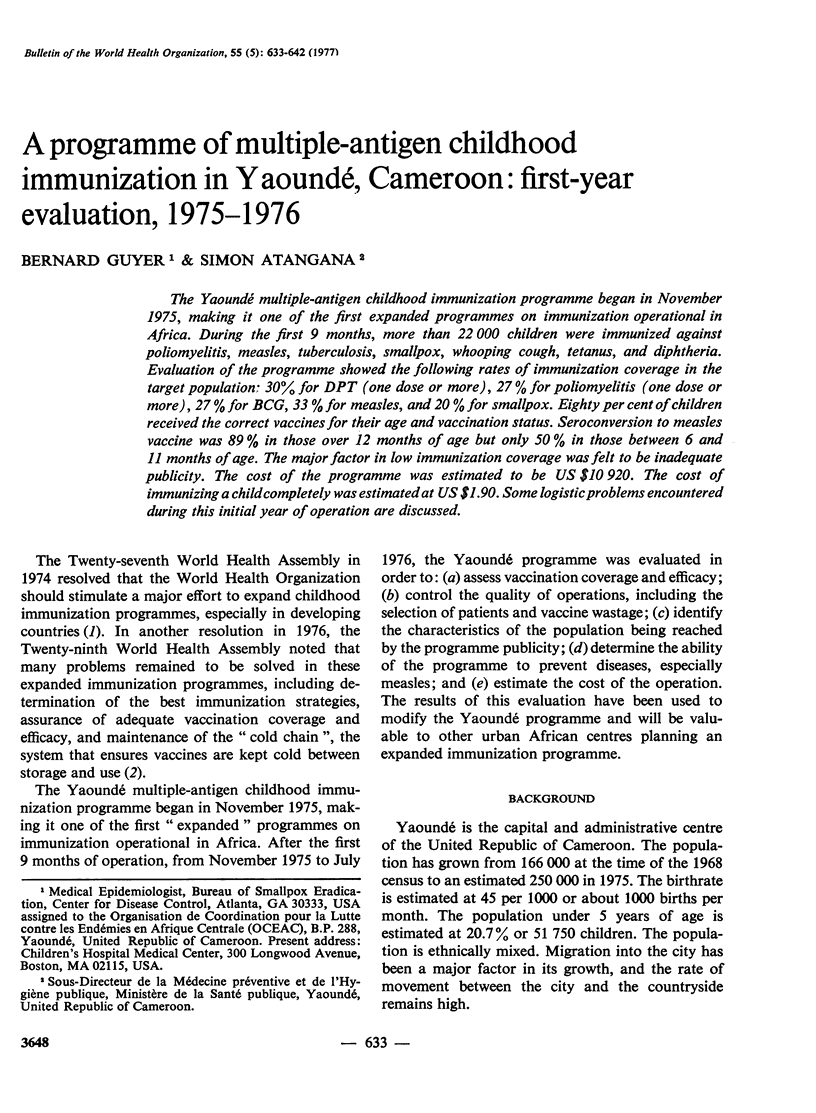

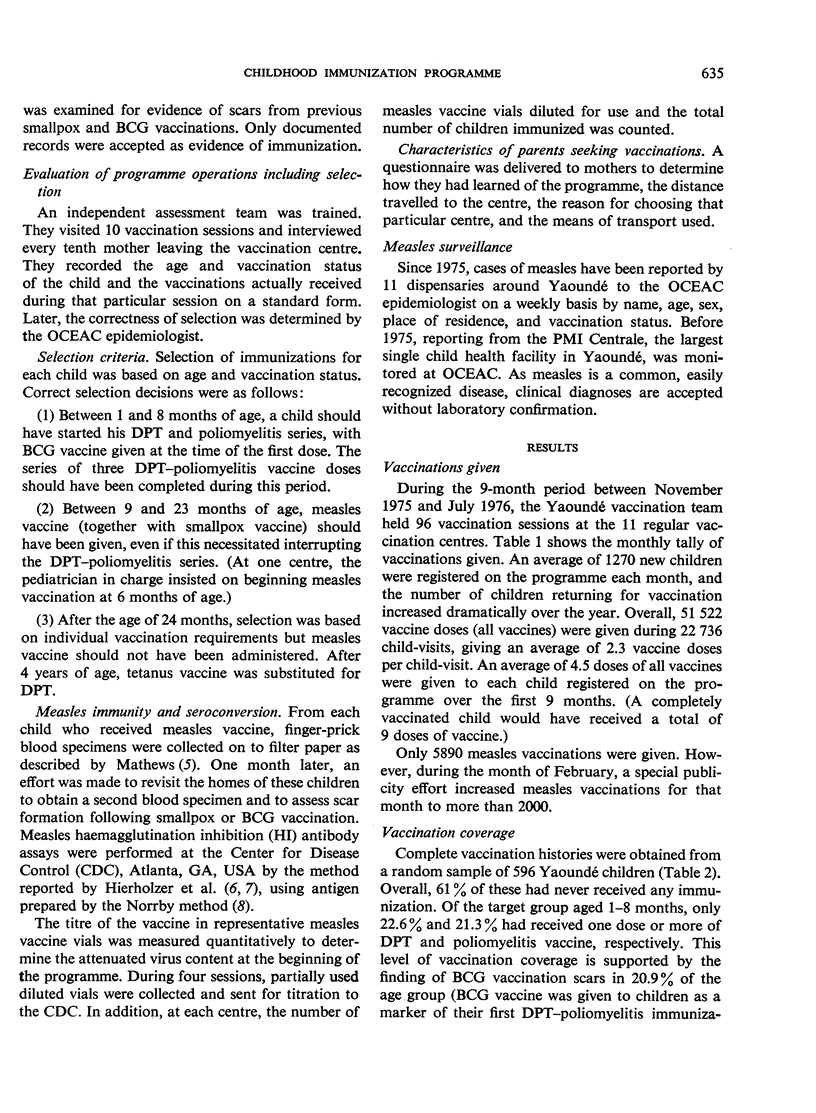
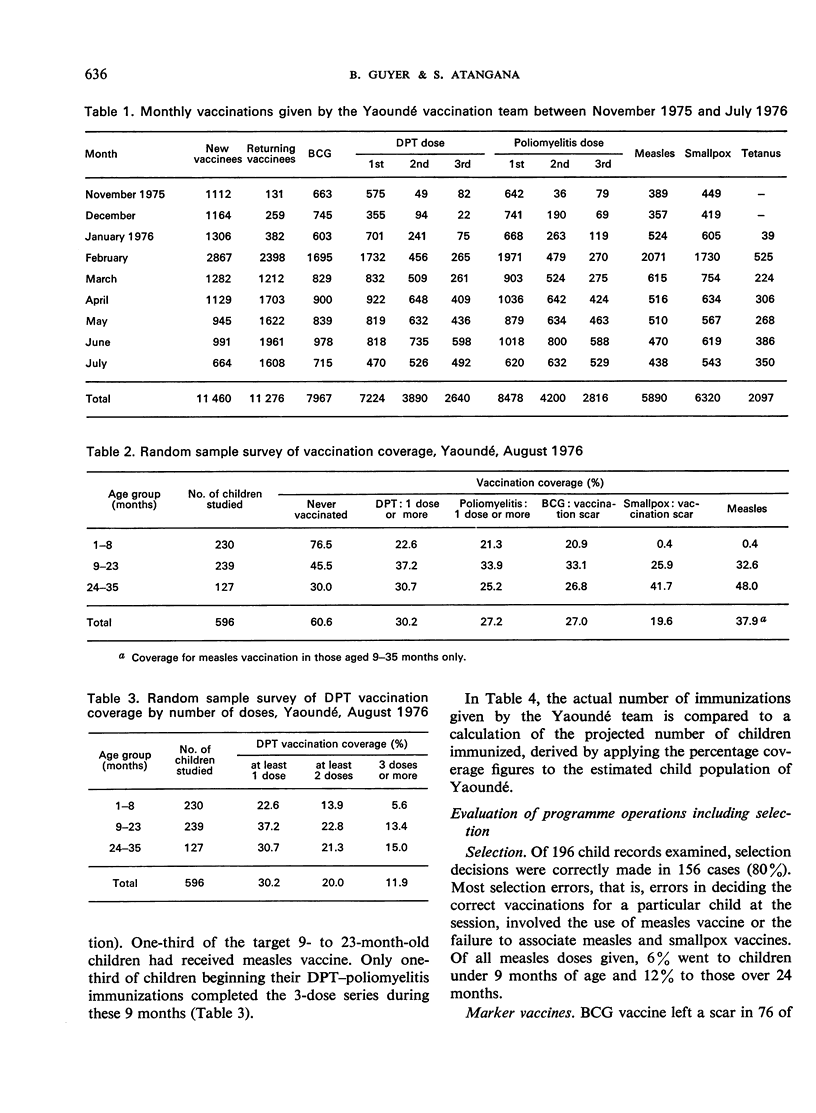


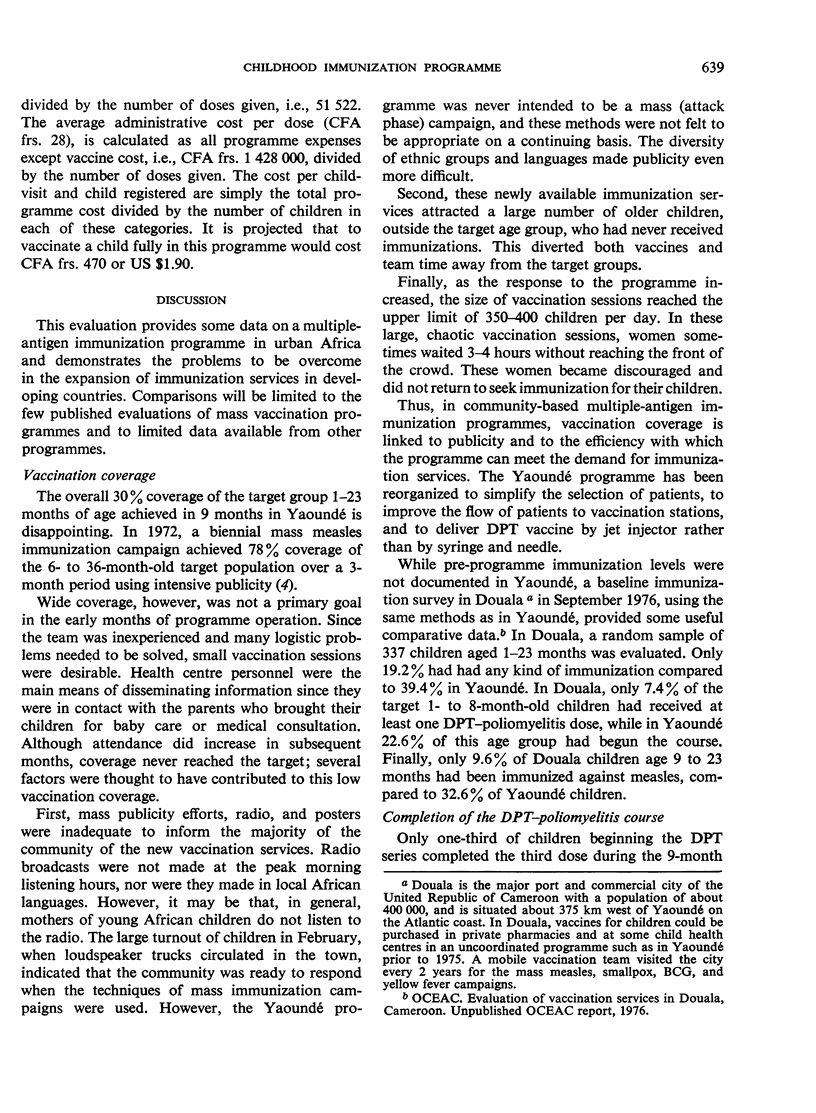
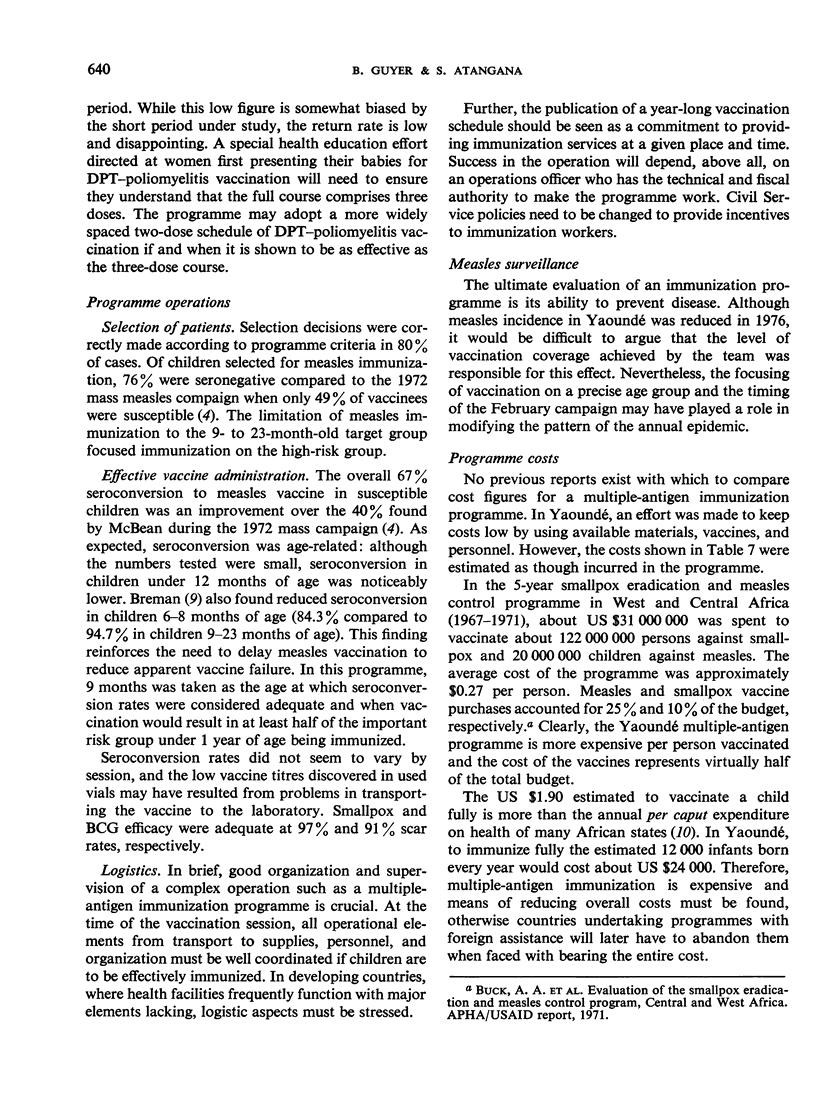
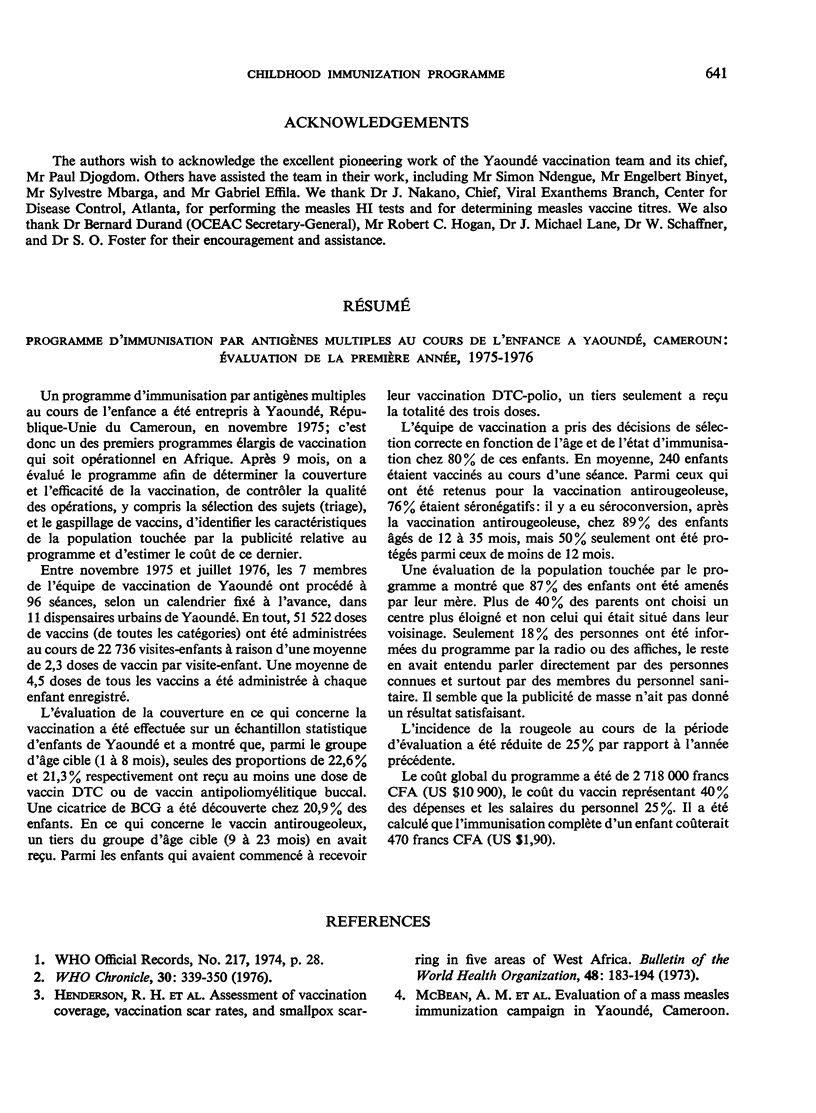
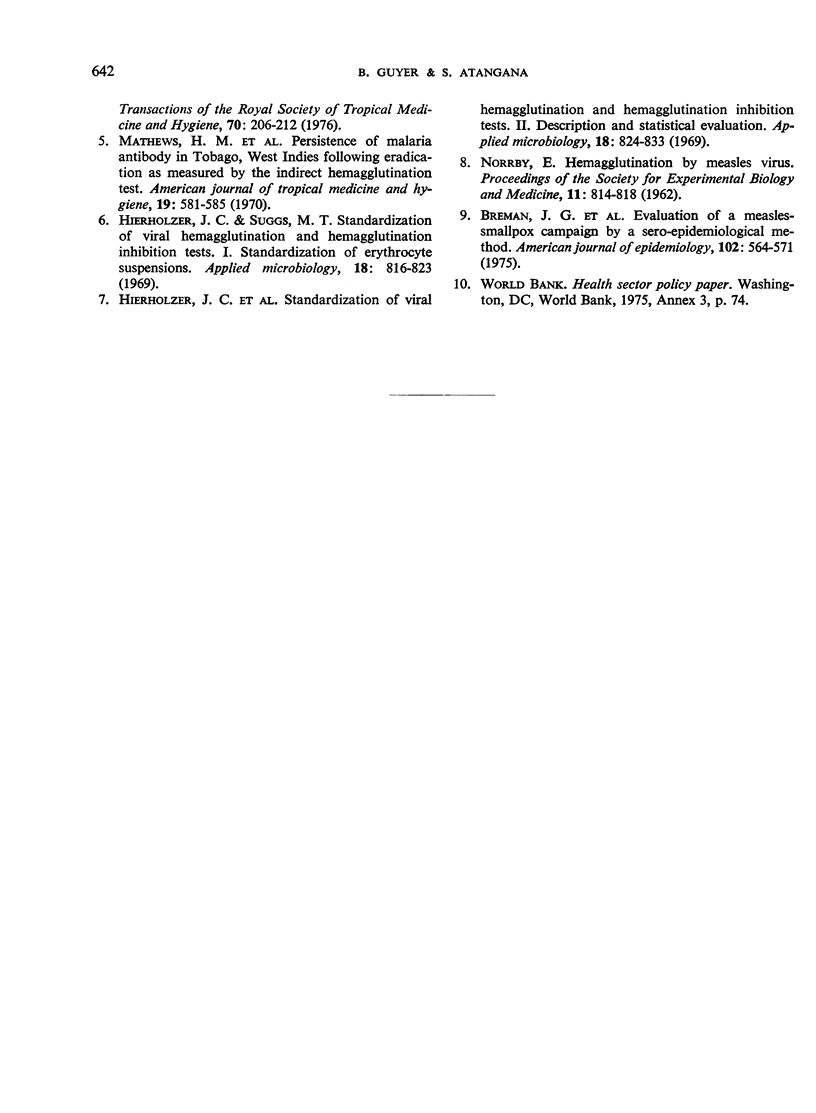
Selected References
These references are in PubMed. This may not be the complete list of references from this article.
- Breman J. G., Coffi E., Bomba-Ire R., Foster S. O., Herrmann K. L. Evaluation of a measles-smallpox vaccination campaign by a sero-epidemiologic method. Am J Epidemiol. 1975 Dec;102(6):564–571. doi: 10.1093/oxfordjournals.aje.a112194. [DOI] [PubMed] [Google Scholar]
- Henderson R. H., Davis H., Eddins D. L., Foege W. H. Assessment of vaccination coverage, vaccination scar rates, and smallpox scarring in five areas of West Africa. Bull World Health Organ. 1973;48(2):183–194. [PMC free article] [PubMed] [Google Scholar]
- Hierholzer J. C., Suggs M. T., Hall E. C. Standardized viral hemagglutination and hemagglutination-inhibition tests. II. Description and statistical evaluation. Appl Microbiol. 1969 Nov;18(5):824–833. doi: 10.1128/am.18.5.824-833.1969. [DOI] [PMC free article] [PubMed] [Google Scholar]
- Hierholzer J. C., Suggs M. T. Standardized viral hemagglutination and hemagglutination-inhibition tests. I. Standardization of erythrocyte suspensions. Appl Microbiol. 1969 Nov;18(5):816–823. doi: 10.1128/am.18.5.816-823.1969. [DOI] [PMC free article] [PubMed] [Google Scholar]
- Mathews H. M., Fisher G. U., Kagan I. G. Persistence of malaria antibody in Tobago, West Indies, following eradication, as measured by the indirect hemagglutination test. Am J Trop Med Hyg. 1970 Jul;19(4):581–585. doi: 10.4269/ajtmh.1970.19.581. [DOI] [PubMed] [Google Scholar]


